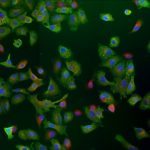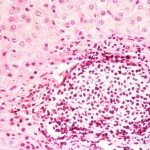Link to Pubmed [PMID] – 20303675
Pathol. Biol. 2010 Apr;58(2):e59-68
The emergence in 2009 of a novel A(H1N1)v influenza virus of swine origin and the regular occurrence since 2003 of human cases of infection with A(H5N1) avian influenza viruses underline the zoonotic and pandemic potential of type A influenza viruses. Influenza viruses from the wild aquatic birds reservoir usually do not replicate efficiently in humans. Domestic poultry and swine can act as intermediate hosts for the acquisition of determinants that increase the potential of transmission and adaptation to humans, through the accumulation of mutations or by genetic reassortment. The rapid evolution of influenza viruses following interspecies transmission probably results from the selection of genetic variations that favor optimal interactions between viral proteins and cellular factors, leading to an increased multiplication potential and a better escape to the host antiviral response. Whereas influenza viruses usually cause asymptomatic infections in wild aquatic birds, they may be highly pathogenic in other species. Molecular determinants of host-specificity and pathogenesis have been identified in most viral genes, notably in genes that encode viral surface glycoproteins, proteins involved in the viral genome replication, and proteins that counteract the host immune response. However, our knowledge of these numerous and interdependant determinants remains incomplete, and the molecular mechanisms involved are still to be understood.

